Machu Picchu - Pachacutec's Great Citadel
![]()
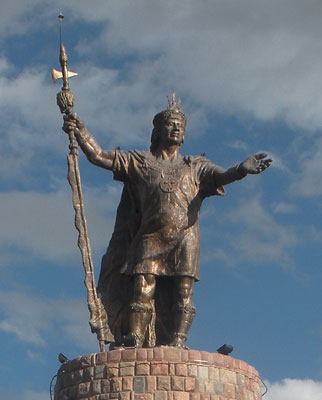 The great Inca ruler, Pachacutec, is credited with the construction of Machu Picchu. He ruled from 1438 to 1471 and archaeologists infer that the citadel's construction dates from approximately the fifteenth century, as confirmed by carbon 14 (radioactive carbon) dating. He was responsible for much of the expansion of the Inca empire as well as the development of religion and spirituality. The construction of Machu Picchu challenged the planning, architectural and construction expertise of him and his subordinates.
The great Inca ruler, Pachacutec, is credited with the construction of Machu Picchu. He ruled from 1438 to 1471 and archaeologists infer that the citadel's construction dates from approximately the fifteenth century, as confirmed by carbon 14 (radioactive carbon) dating. He was responsible for much of the expansion of the Inca empire as well as the development of religion and spirituality. The construction of Machu Picchu challenged the planning, architectural and construction expertise of him and his subordinates.
The citadel was a royal enclave, a privileged place where only those close to the emperor could come to view the heavens and observe the movements of the sun and stars, the Inca's gods. Surrounded by steep cliffs and secluded from the sight of strangers by the thick jungle around it, the citadel possessed only one narrow entry point, which enabled a successful defense by a handful of warriors in the event of surprise attack.
From the very beginning, we had planned to include a journey to this great Inca Sanctuary and Citadel, Machu Picchu, in our explorations of Peru. Then, in January, before we left the USA, news came that record rainfall in the area had raised the level of the Rio Urubamba causing severe damage to the railroad tracks from Cusco to Aguas Calientes (Machu Picchu Pueblo), the gateway to the Machu Picchu site. Visitors to Machu Picchu were stranded, but were soon flown out by helicopter, or offered temporary accommodations. The great Citadel was closed! Our hearts sank.
In those early days after the floods, it was not clear when the tracks could be repaired and visitors could return. As the weeks passed, we watched the news anxiously as a visit to Machu Picchu was to be the highlight of our journey through Peru. Then, in late March, PeruRail announced that service would resume April 1 - great news. We reworked our itinerary to arrive at Cusco in mid April, allowing a few extra days for the new operation to get going.
What was so very compelling about this particular place? Besides its fame, notoriety and reknown, we were drawn by the wish to experience this most spectacular Inca cultural and religious center, perhaps to feel the presence and gain an understanding of these people who created such a great empire less than 600 years ago.
Early in the morning, on the day of our visit, we walked from our hotel to the place where the buses to the Machu Picchu site leave from. We boarded the next to leave.

The bus headed out of the village and down the hill and on the partially paved road alongside the churning, rushing Rio Urubamba. In about 10 minutes, it made a sharp turn to the left across a one lane wooden bridge. We noted a companion pedestrian bridge alongside.
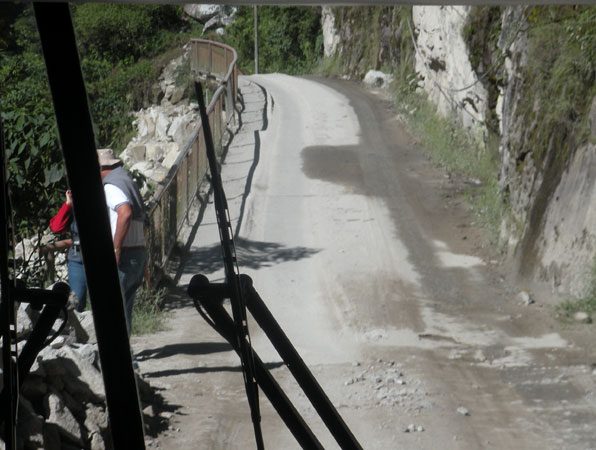
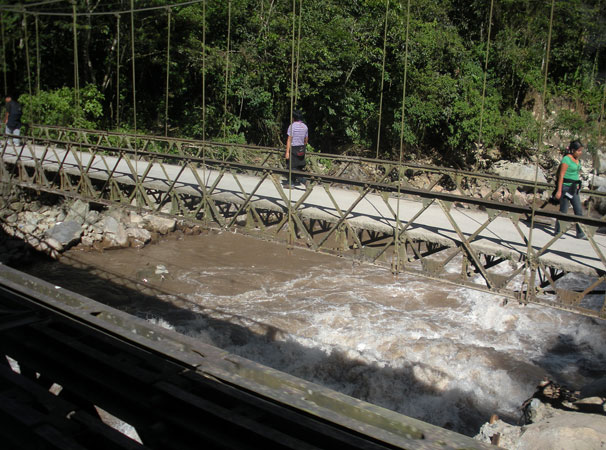
From here the bus climbed, following the steep, narrow, switchbacked road. Over the next 15 or so minutes we climbed about 400 meters, finally reaching the parking lot for the Machu Picchu Sanctuary Lodge and the entrance to the site.
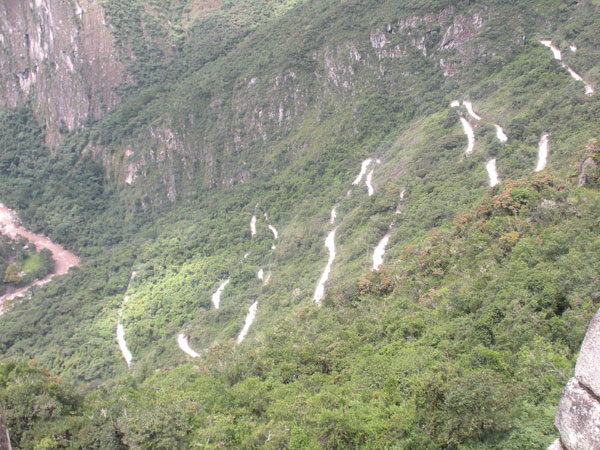
We got out and stopped to study the map of the site. We then walked the short distance to the entrance and pulled out our entry tickets. The entry guard stamped them as 'used' and we proceeded up the path, entering the Inca's world.
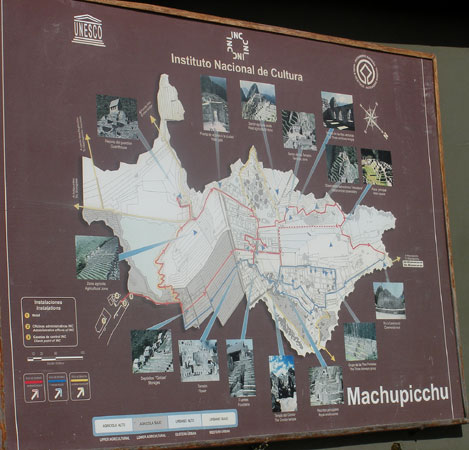
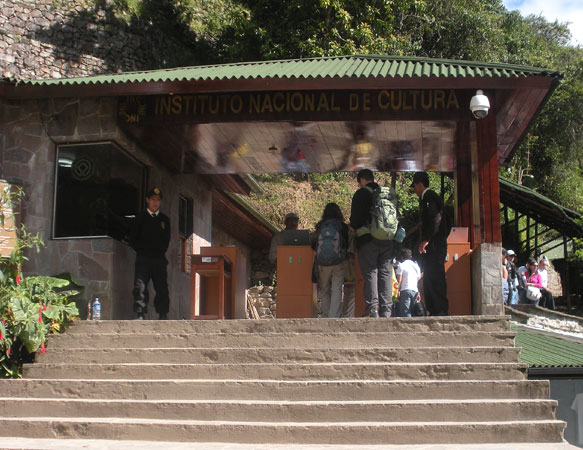
After about 100 meters the east side of the site came into view (below left). A few steps further, more of the site was visible (below right); we stopped to enjoy this fabulous panorama, one that we'd seen in travel books and posters all our lives.
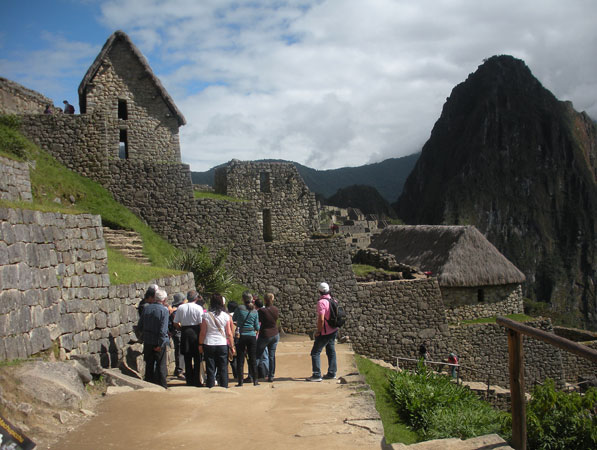
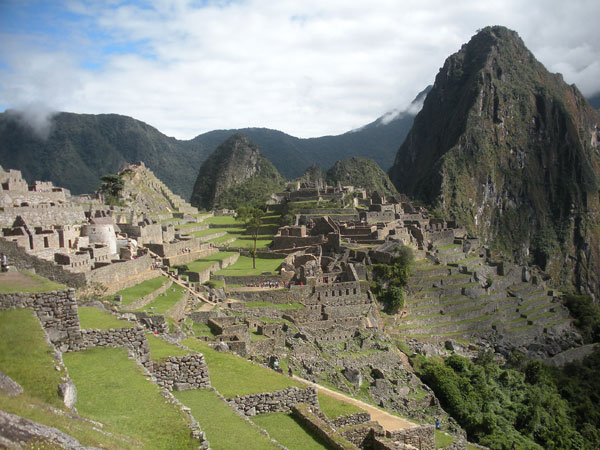
We then turned and started up the Intipunku Trail toward the 'Sun Gate'. After stopping briefly for a view down to the river and Aguas Calientes, we climbed higher for wonderful views out over the whole site.
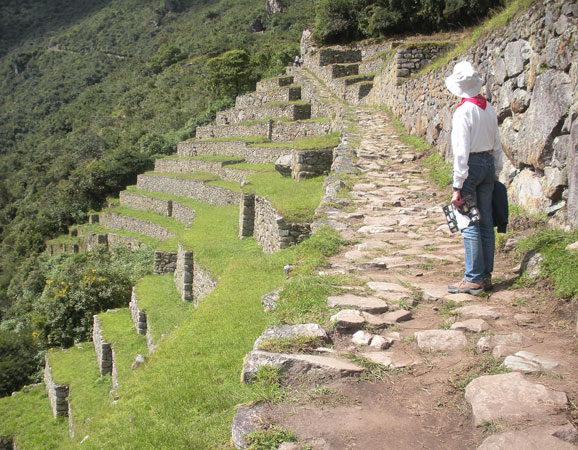
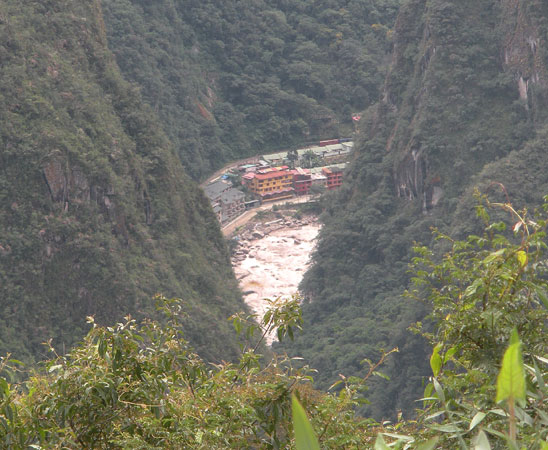
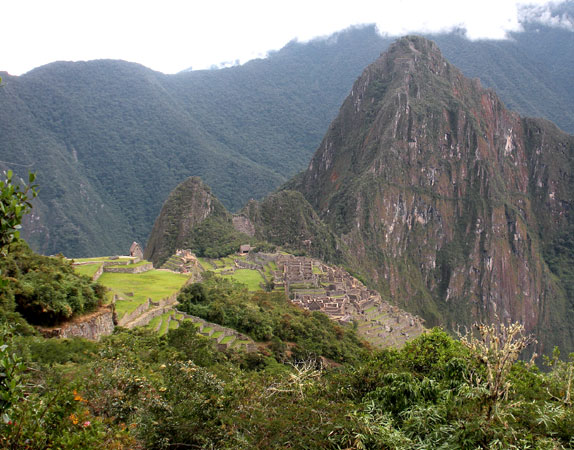
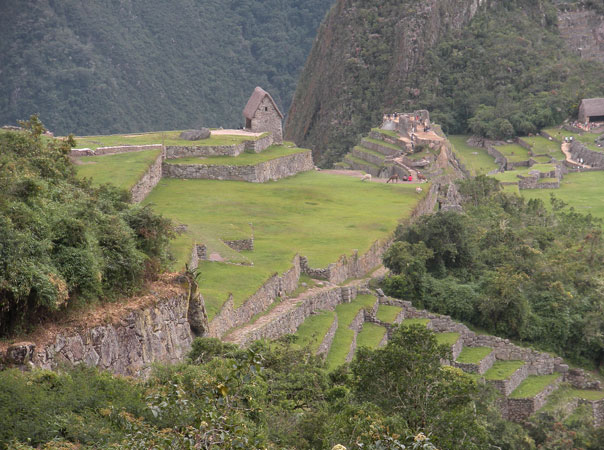
Making our way back down, we viewed the Guardhouse, which guarded the Intipunku Trail approach to the site, and off toward the main plaza ahead.
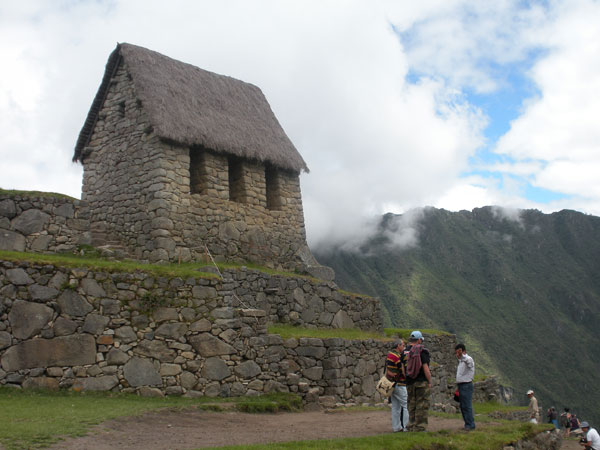
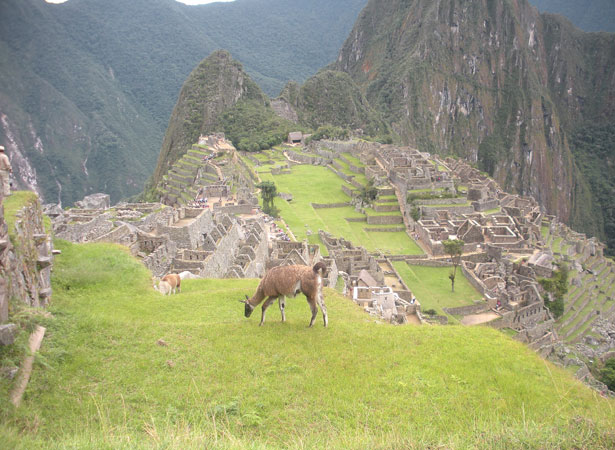
A few more steps brought us to Cemetery Rock and great views of the Urubamba valley below.
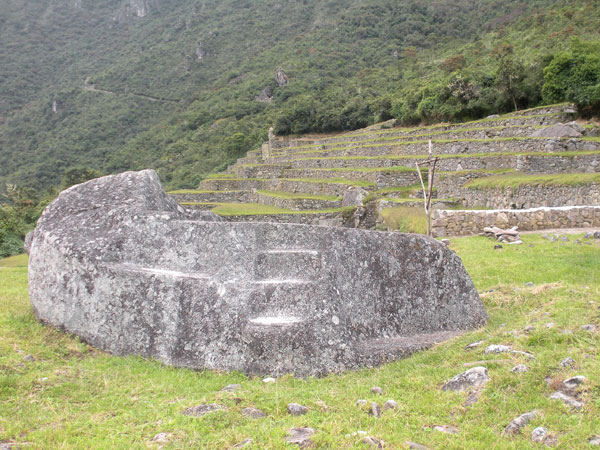
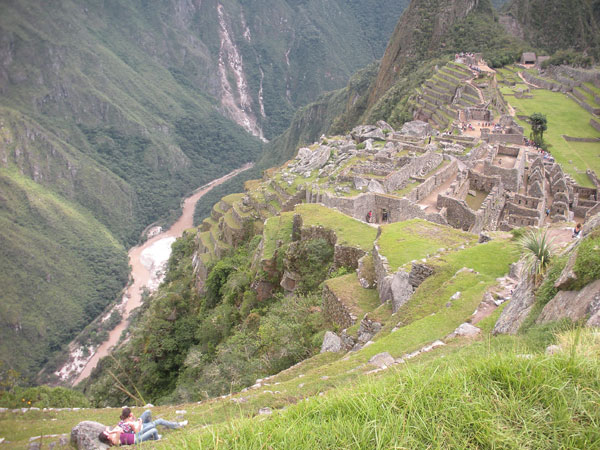
As we approached the Inca Gate, the main entrance to the site in Inca times, we became immersed and surrounded by tour groups which were quite a distraction, but we stayed focused as we descended into the Temple complex and the Intiwatana point above it ...
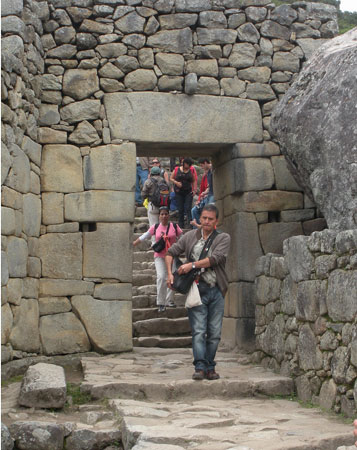
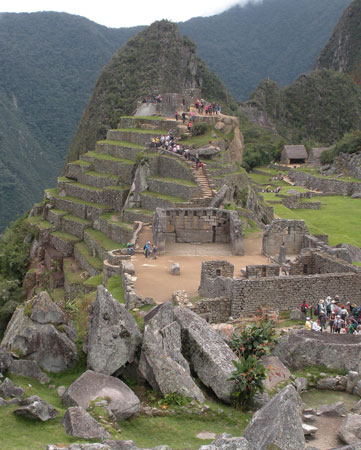
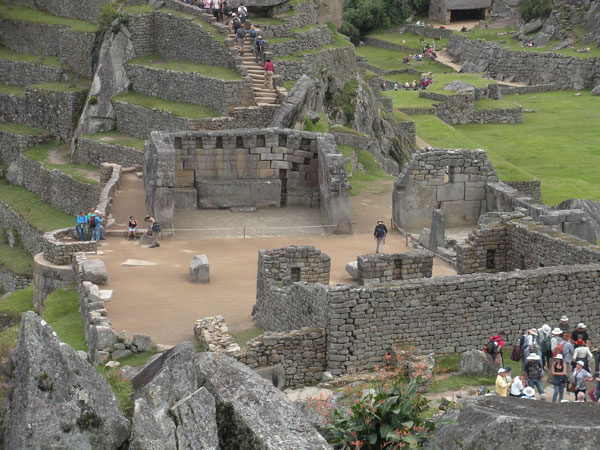
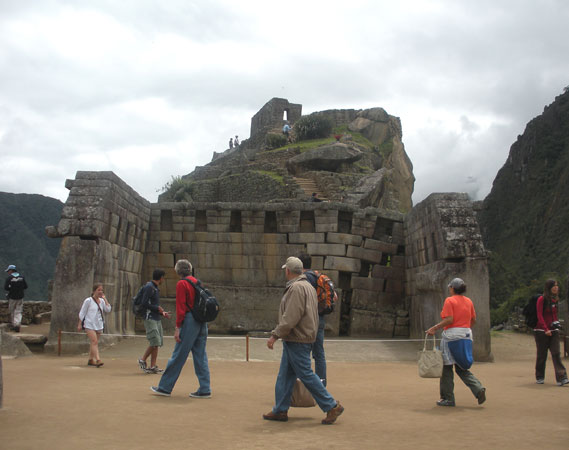
... and on up more stairs to the top of the Intiwatana astronomical point, which gave us great views over the whole site. The focus of this place is a specially carved stone that enabled the Inca to make their astronomical sightings.
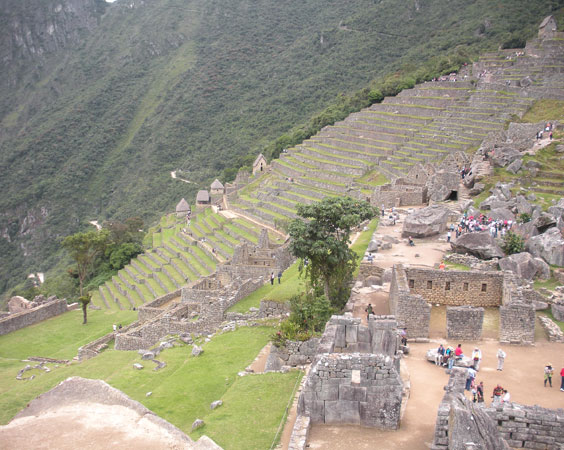
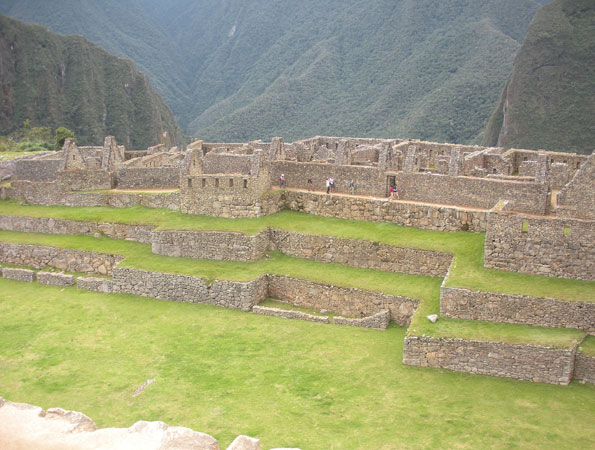
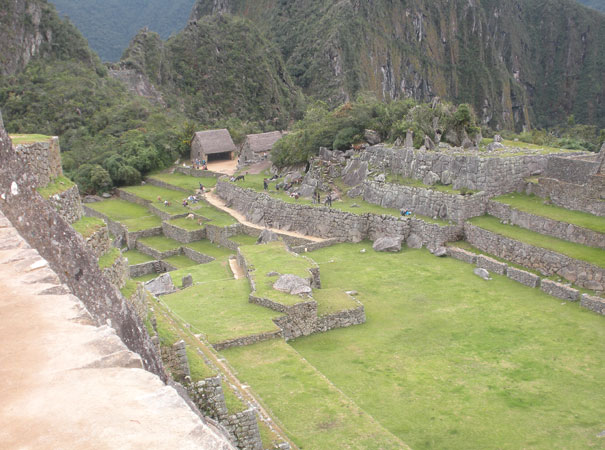
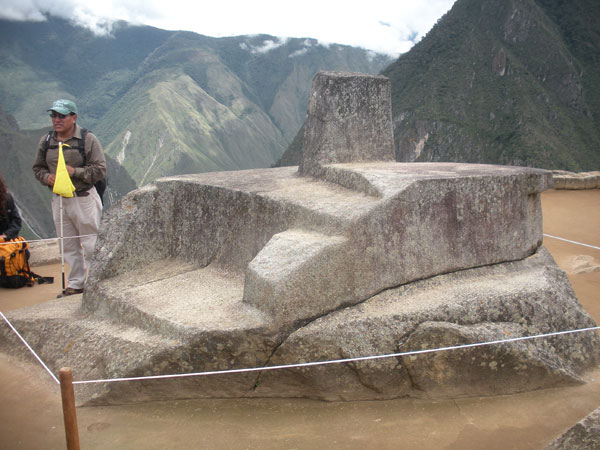
Descending from the Intiwatana, we entered the west side of the main square with it's large grassy parks where llamas grazed here and there. We had now lost the crowds and it was quieter again, thankfully; we felt that the spirits were returning.
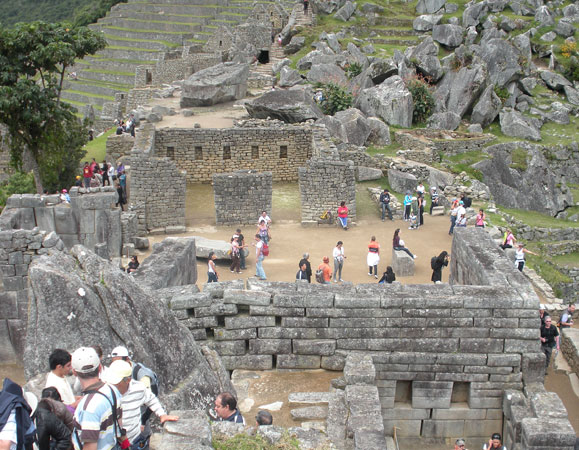
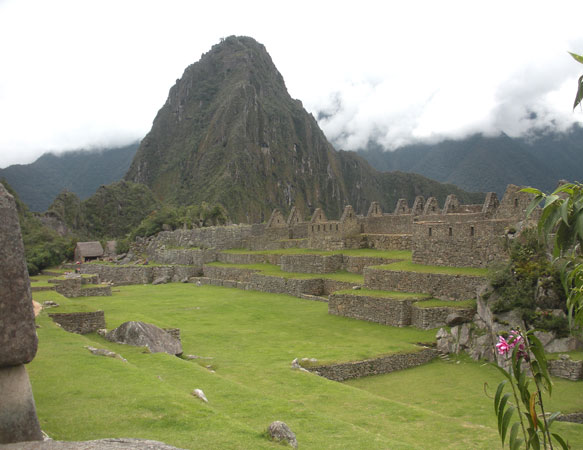
We proceeded on to the north end of the site where a trail offered access to the great mountain, Waynapucho. A sculptured rock, roughly in the shape of the distant mountains dominated the plaza.
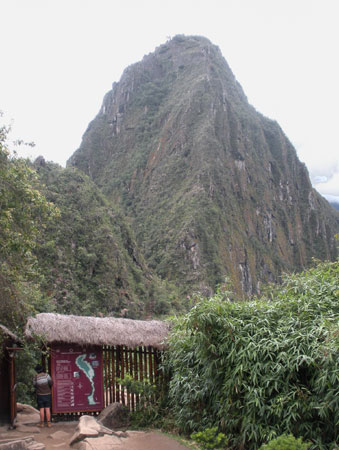
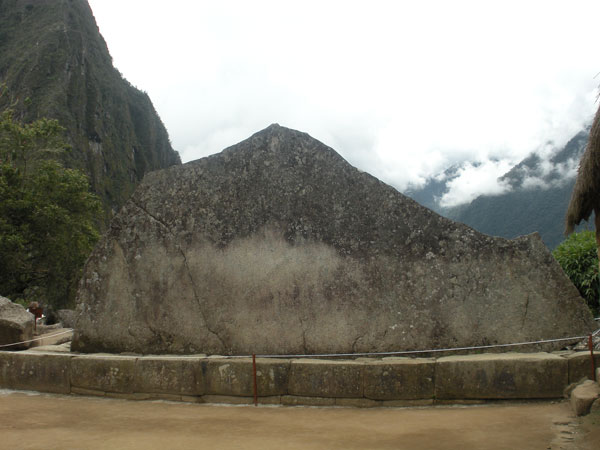
It was time for lunch- we made our way back through the residential area and across the agricultural terraces to the entrance, where we visited the snack shop.
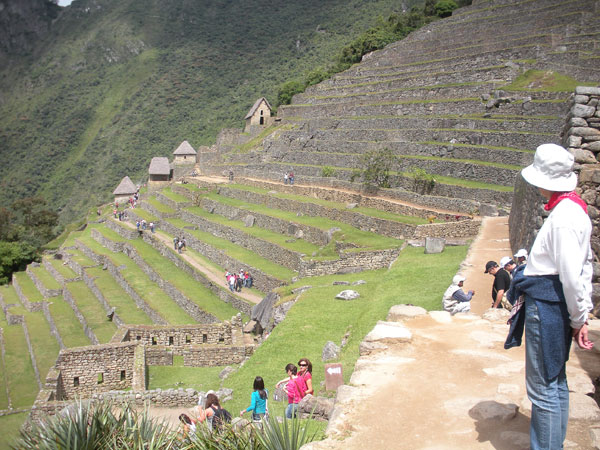
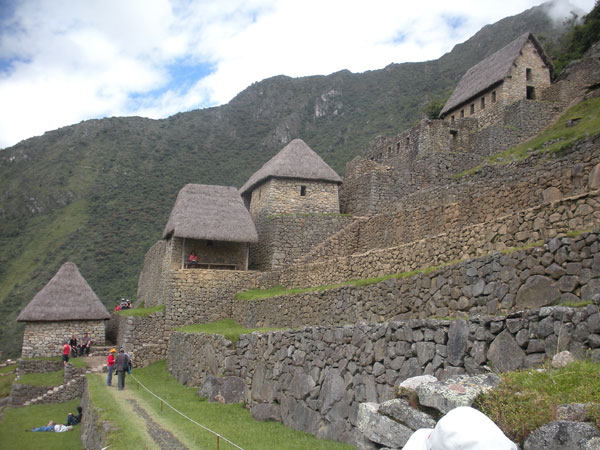
Feeling re-energized, we re-entered the site and proceeded to visit the areas we hadn't visited earlier.
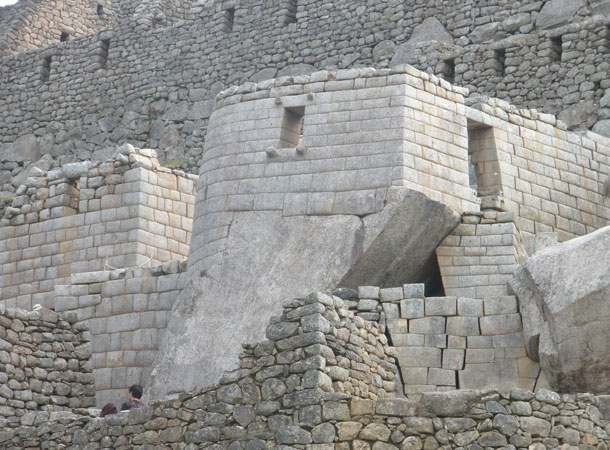
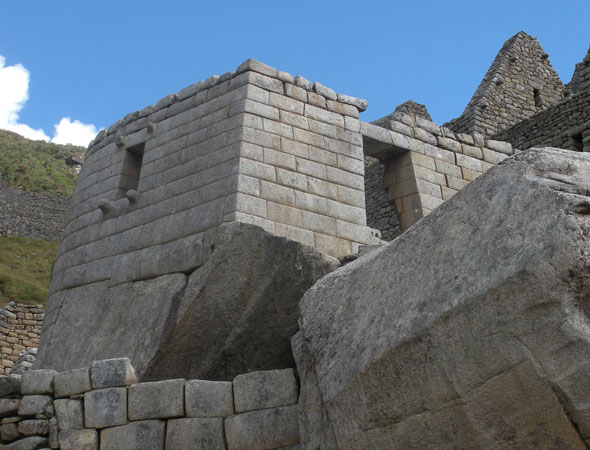
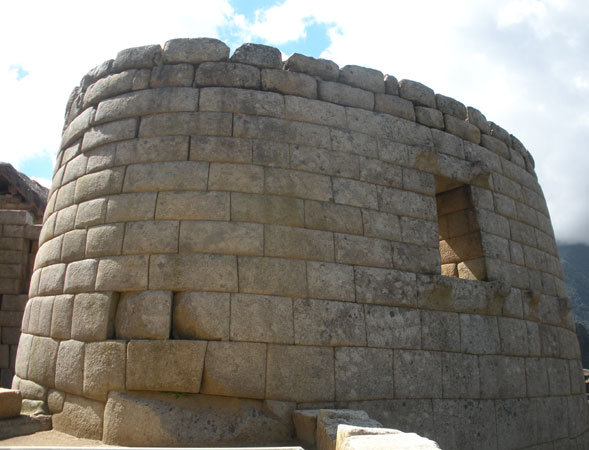
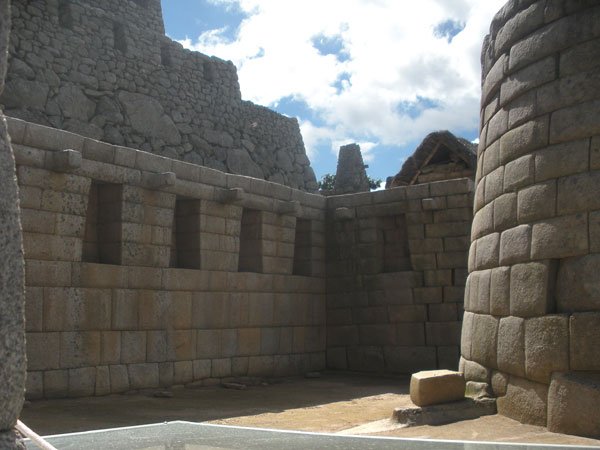
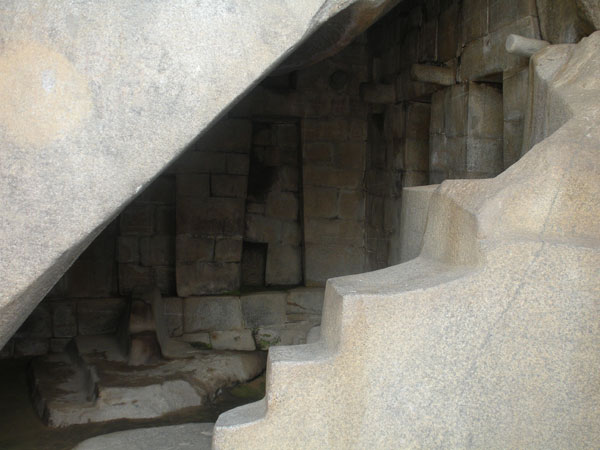
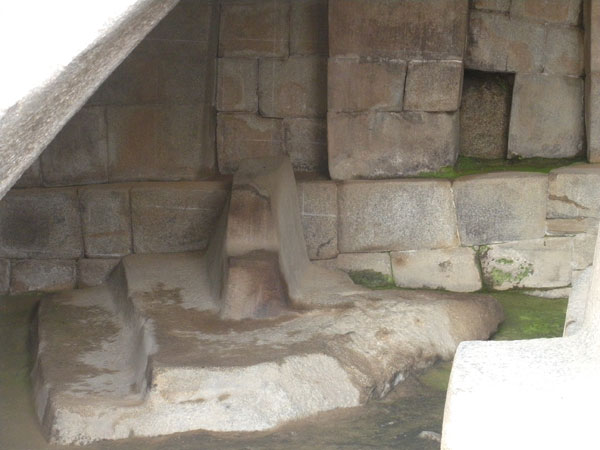
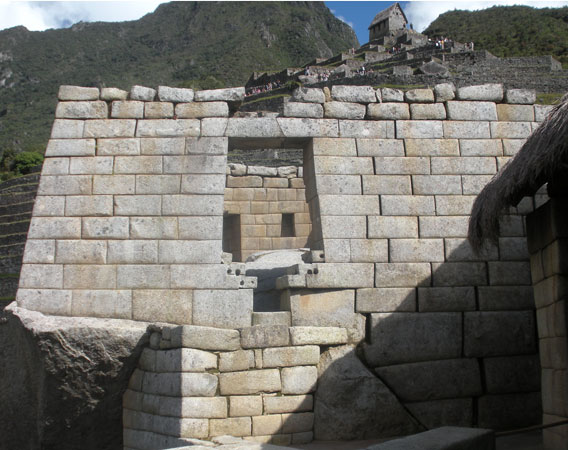
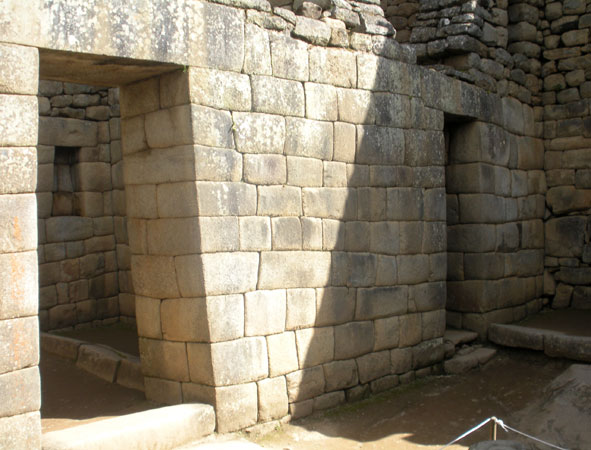
Returning to the north end of the site, we entered the residential area including the multiple Tres Portadas (Three Door) buildings...
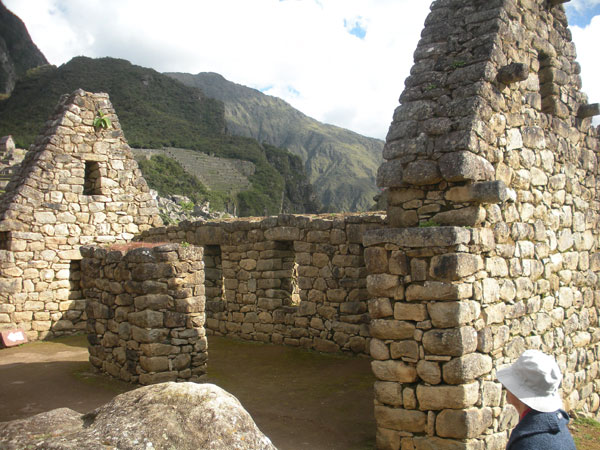
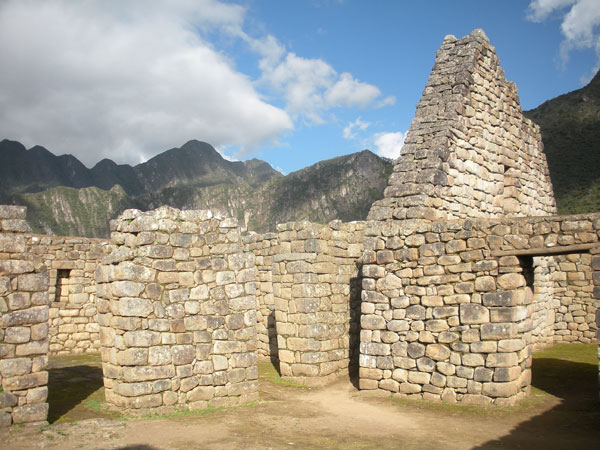
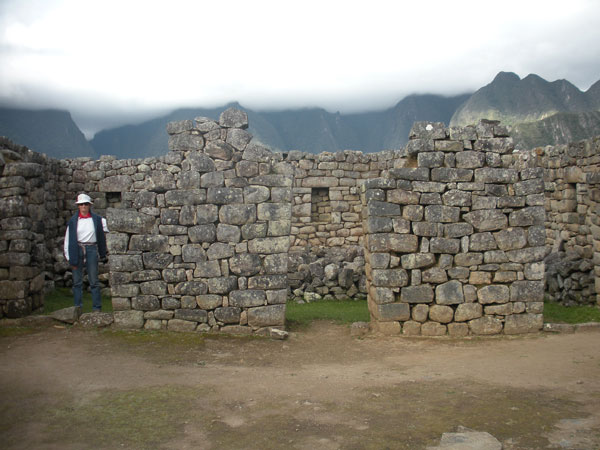
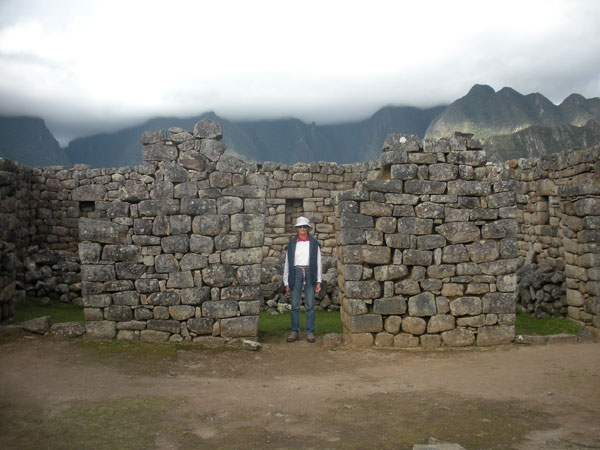
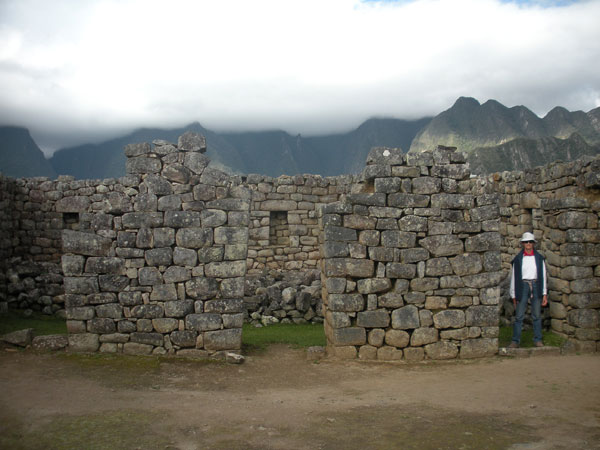
... and the Temple of the Condor.
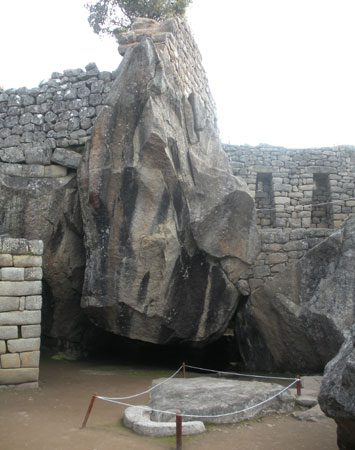
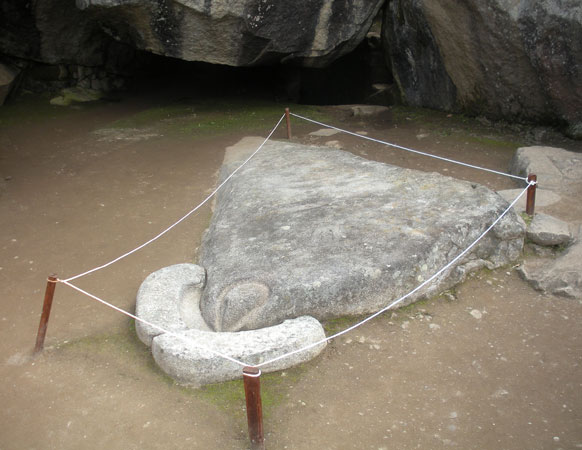
It was now late afternoon and we agreed that we had had a wonderful visit, exploring most all of the site and absorbing much of the spirit of the place. We made our way back across the agricultural area toward the entrance, stopping a few times for our last views and pictures.
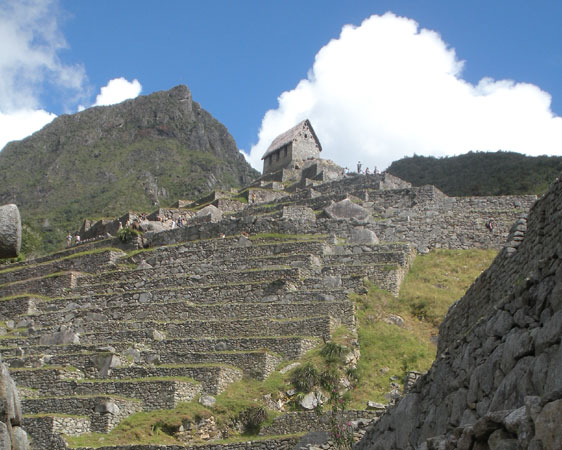
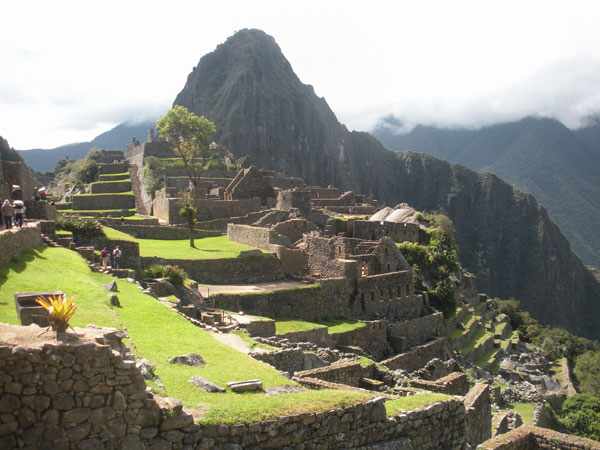
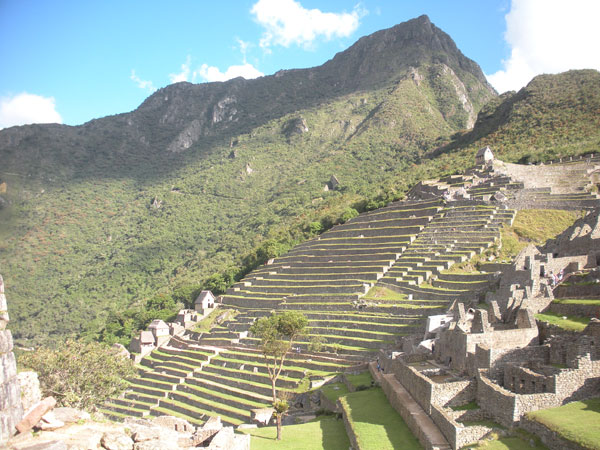
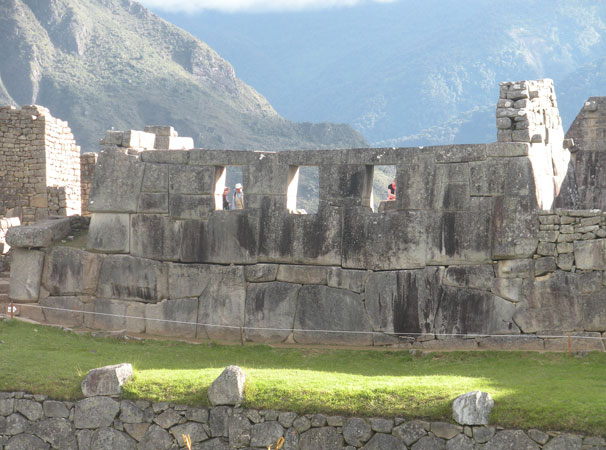
Back at the entrance, we boarded the bus to Aguas Calientes. Sitting down to relax for the first time in a while felt very good.
Soon we were on our way back down the switchback road. We again admired the views down to the river and up to the surrounding mountains, now in different light than we had seen them earlier. We never tire of viewing this wonderful scenery; it's another chapter in our epidsodes of 'sensory overload' like our experiences in Norway last year.
Later, over dinner, we reflected that with all the stairs and climbing up and down, visiting this site was quite physically demanding, and the constant need to rally more energy and endurance may have been a bit more of a distraction than we would have liked. But Machu Picchu is what it is, and we felt that our visit was truly a wonderful experience.
Click here to return to our Central and South America - Spring 2010 page
![]()